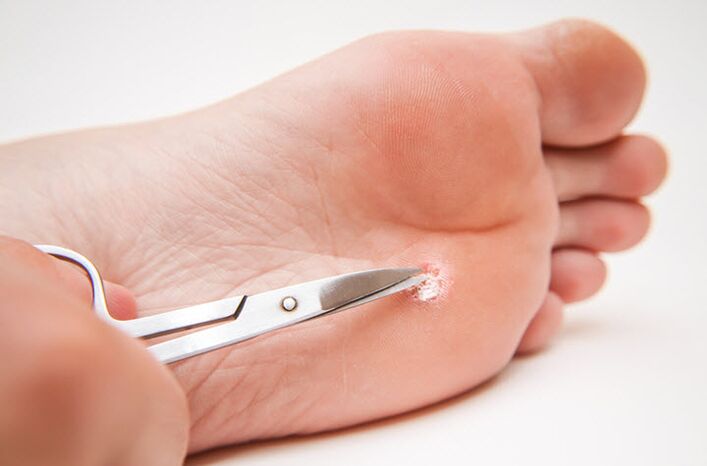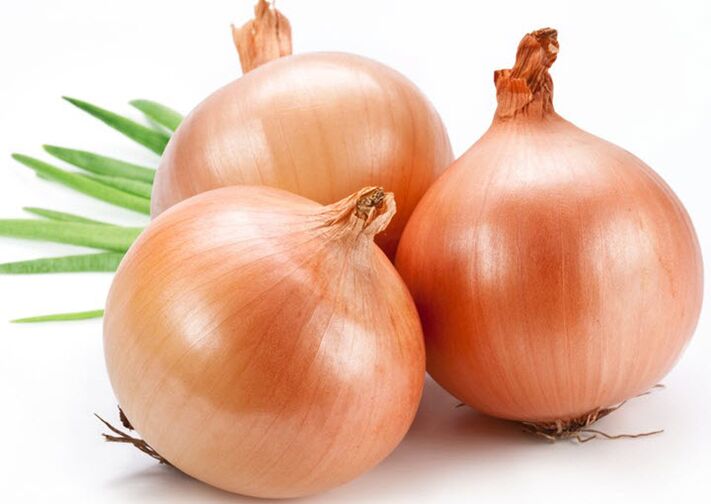Surely almost every person has heard the word "wart" and, most likely, frowned in disgust at the same time, thinking about how unpleasant and possibly dangerous an infectious disease is. Some remember from childhood: you should never touch frogs, there will be warts. Someone authoritatively declares that "it will pass by itself" and, in general, it is like a mole and not at all scary, while others are very afraid of catching them. There is a lot of speculation about the disease because not everyone knows the exact cause of the disease.
Prevented is worth two. Therefore, it is important to understand why people get warts, what they are, why they are dangerous, and whether they have anything to do with frogs.
types of warts
Warts are skin growths caused by the human papillomavirus (HPV), which lives and multiplies only in the epithelium and mucous membranes. Under certain conditions, the virus begins to emerge on the surface of the epithelium in the form of growths. Neoplasms can be of different sizes - both small and quite large - and colors - from pink to dark brown.

HPV has a large number of strains and this is what causes various types of warts.
flat warts (juvenile)
Such neoplasms resemble outwardly rounded spots of irregular shape. They occur in adolescents entering puberty. Its appearance is closely related to the hormonal restructuring of the young organism. They produce many unpleasant sensations, from psychological discomfort to itchy skin. Usually it is flat warts that itch, for other species this is not characteristic. Most often, skin inflammations of this type occur on the face, neck, arms and legs. They usually pass on their own and do not require serious intervention.
Vulgar warts (common)
They are dense growths that resemble nodules. This type is the most common. The fact is that they appear on the hands and fingers, palms, which allows HPV to easily pass from a sick person to a healthy one. The virus enters the body through damage to the skin when touched or in the process of using household items. The main reasons for the appearance of warts on the hands lie precisely in the ease of transmission of the disease and non-compliance with basic hygiene rules.
One of the common wart subspecies are plantar warts. They affect the lower legs: feet, heels, toes. Such growths bring a lot of pain, because they are extremely painful, especially when walking.
In most cases, common warts go away completely within six months to a year, but in some cases they may not go away for longer.
filiform warts
Neoplasms of this type are soft and rounded. In most cases, these warts appear in the elderly, in women with problematic pregnancies and during menopause, since their appearance is associated with hormonal imbalance. First of all, delicate skin areas are affected: face, neck, groin area, armpits. The presence of folds on the body and excessive sweating also contribute to the spread of epithelial growths.
Unlike the previous two types, this type of skin formation requires careful monitoring and treatment under the supervision of a specialist. It is important to know that they will not go away on their own and may need to be removed.
Genital warts
A different type of wart that affects the genitals, anus, or, much less commonly, the mouth. They are growths on the leg, which are shaped like an icicle. With the development of the disease they grow, becoming like a cauliflower.
Warts usually turn into malignant tumors, so their appearance and growth must be supervised by a specialist.
Causes
Almost half of the world's population is infected with the human papillomavirus, but not all carriers know it. For a long time, HPV may not manifest itself, while maintaining vital activity. Warts or condylomas appear at the moment when the conditions for their development become favorable, that is, with a decrease in the protective functions of the human body. Actually, weak immunity is the main reason for the appearance of genital warts and warts on different parts of the body.
Provoking factors:
- hormonal failure in the body (puberty, pregnancy, menopause);
- metabolic disease;
- unprotected sexual intercourse;
- non-compliance with the rules of personal hygiene;
- dry skin of the hands or, conversely, intense sweating;
- circulatory disorders;
- the presence of microdamage in the epithelium.
By the way, as practice shows, the appearance of warts has nothing to do with frogs, so we can safely say that this is just an illusion.
Diagnosis
Each type of wart is characterized by a special structure and a set of features inherent in it. This makes it possible to quickly diagnose and prescribe the appropriate treatment.
An external examination of the neoplasm is enough for a dermatologist to distinguish a wart from other skin diseases (lichen planus, warty tuberculosis of the skin, etc. ). In addition, it is necessary to ensure that the growths are of good quality and to identify the degree of their oncogenicity. To do this, conduct research by PCR and biopsy. In addition, to determine the strain of the virus and its concentration level, a Digene HPV test is performed. Thanks to him, a prognosis for the development of a neoplasm is built, methods of therapy are determined.
When growths appear on the skin, sufferers are not in a hurry to consult doctors and treat them, since warts do not have acute symptoms. Sometimes neoplasms can itch. In most cases, these growths do not bother their owners, except for their unsightly appearance.

There are a number of indications for contacting a specialist. First of all, it is:
- the rapid growth of the wart (a size of more than 2 cm is an indication for surgery);
- itching, tingling, burning, growing pain;
- sharp blackening of the neoplasm;
- trigger the inflammatory process (suppuration, appearance of blood);
- the emergence of new formations around a growth;
- change of shape and structure.
With genital warts, additional studies are required.
effective treatments
You can quickly get rid of warts, as long as the growth is of good quality. First of all, it is necessary to eliminate those that deprive a person of psychological comfort, cause pain or are located in places where they are easy to injure. The most used for treatment are:
- pharmacy funds. The method of fighting with drugs also includes immunotherapy, local topical application of acid-containing drugs, retinoic acid, the use of hormonal ointments. The necessary medications are prescribed by a doctor.
- Home remedies. We are talking about the use of different types of medicinal plants and fruits. For example, such folk methods are considered effective:
- Compresses from a raw onion soaked in vinegar. The vegetable is tied to the wart for several nights in a row. In order not to burn the skin around the formation, it is recommended to seal it with adhesive tape. Rubbing warts with freshly cut potato halves helps remove them.
- The most popular and proven method is cauterization of warts with celandine juice. The procedure should be carried out twice a day, using freshly cut grass. The juice of this plant can burn the skin, so the procedure is carried out strictly locally.
- Another effective remedy is a mixture of the juices of dandelion, milkweed, rowan berries, tart apples, onions, garlic and lemon. There are no specific proportions: the amount of each ingredient is determined by eye. The resulting mixture is applied to the wart three times a day.
- They get rid of hard growths on the hands with the help of vinegar, dripping it on the problem area. For a brighter effect, a mixture of vinegar and flour is also used: the pasty mass should be applied to the wart, wait for it to dry, and then bandage it overnight.
- For cauterization, a mixture of finely grated garlic, lemon juice and flour is often used. It should also be applied at night for some time.
- Horseradish juice also has a cauterizing effect. Its root is grated, mixed with salt and applied to growth.
- operation and other methods. Do not neglect the traditional ways of getting rid of warts, which are practiced in medical institutions. First of all, this
- Cut a wart without damaging adjacent tissue using a radio wave scalpel under local anesthesia. Now this procedure is used less often, since there is a high probability of scarring in the places where warts are removed. However, if the size of the growths exceeds 2 cm, the operation is carried out without fail. The method allows you to completely remove the wart.
- Cryotherapy - the formation is frozen with liquid nitrogen, which deprives its cells of vital activity, after the event it will no longer grow.
- Electrocoagulation - cauterization of growths. Such elimination of the problem is considered quick and effective.
Aesthetic medicine clinics also offer services for the removal of skin formations with laser or phototherapy.
Don't forget: when warts of any kind appear, it's best to see a doctor! Most often, HPV-induced neoplasms are benign and do not require serious intervention. However, to be sure, it is better to pass the necessary tests.
Prevention
Of course, the surest way to protect yourself from the appearance of an unpleasant skin disease is to have a strong immunity. Unfortunately, few people can boast of this. Therefore, in order to reduce the risk of infection with warts and condylomas, it is important to follow the rules of hygiene, namely:
- wash your hands well, take a shower or bath regularly and teach your child to do the same, since children get the disease more often than adults;
- do not use other people's hygiene items;
- when visiting baths, saunas, swimming pools, wear replaceable personal shoes, do not lean with bare parts of the body against seats, walls of showers and steam rooms;
- timely treat abrasions, cuts, small wounds with disinfectants;
- exclude unprotected sexual intercourse, using barrier methods of contraception;
- to vaccinate against the most dangerous types of HPV.















